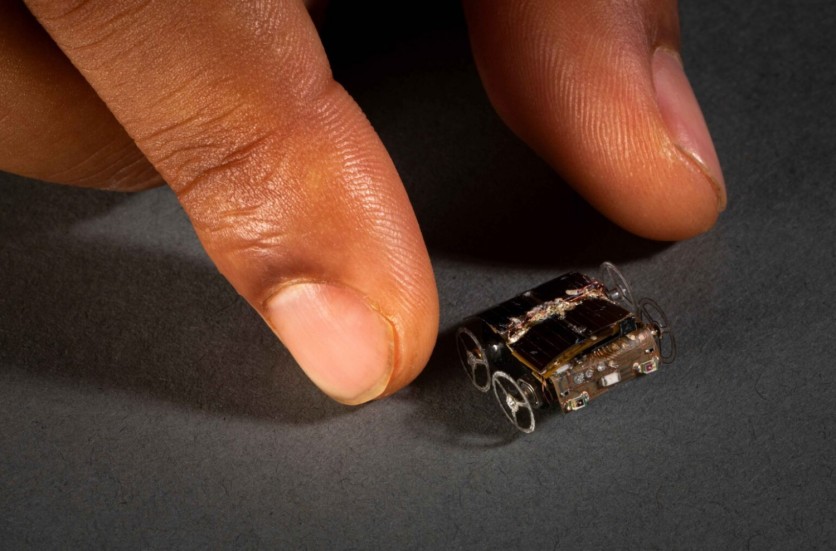A team of researchers at the University of Washington has unveiled MilliMobile, a tiny self-driving robot that relies solely on ambient light or radio waves for power.
This robot is equipped with a solar panel-like energy harvester and four wheels, and it measures roughly the size of a penny and weighs as much as a raisin. Remarkably, it can cover the length of a bus (about 30 feet or 10 meters) in an hour, even on overcast days.
Additionally, the robot has the capacity to traverse surfaces like concrete or compacted soil and can carry equipment three times its own weight, such as a camera or sensors. By utilizing a light sensor, it autonomously moves toward light sources, enabling it to operate indefinitely through harvested power.

MilliMobile Draws Inspiration From 'Intermittent Computing'
The concept behind MilliMobile draws inspiration from "intermittent computing," a methodology that breaks down intricate programs into smaller steps. It allows a device with limited power to work incrementally as energy becomes available.
The reduction in the robot's size and weight means it requires only a modest amount of energy to facilitate movement. Analogous to the measured steps taken by animals, MilliMobile moves in discrete increments, utilizing small bursts of energy to turn its wheels.
"With MilliMobile, we applied this concept to motion. We reduced the robot's size and weight so it takes only a small amount of energy to move. And, similar to an animal taking steps, our robot moves in discrete increments, using small pulses of energy to turn its wheels," said co-lead author Kyle Johnson, a UW doctoral student in the Paul G. Allen School of Computer Science & Engineering.
The researchers conducted extensive testing of MilliMobile in various environments, both indoors and outdoors. These settings included parks, an indoor hydroponic farm, and an office space. The robot demonstrated the capability to move even in extremely low light conditions, such as beneath a kitchen counter, albeit at a slower pace.
Robot Self-Navigation Capabilities
The ability to operate continuously, even under such limited lighting, opens up new possibilities for deploying a swarm of robots in areas where conventional sensors may face challenges in gathering nuanced data. MilliMobile boasts self-navigation abilities, relying on onboard sensors and compact computing chips.
The team programmed the robot to employ its built-in light sensors to autonomously move toward a light source. The significance of this development extends beyond the realm of "Internet of Things" sensors that are typically fixed in predetermined locations.
MilliMobile serves as a dynamic robotic sensor capable of collecting data from multiple points within a given space, offering a more comprehensive understanding of its environment, according to co-lead author Zachary Englhardt, a UW doctoral student in the Allen School.
In addition to light, temperature, and humidity sensors, the researchers have integrated Bluetooth technology into MilliMobile, enabling it to transmit data over distances of up to 650 feet (200 meters).
The team plans to incorporate additional sensors and enhancements in data-sharing capabilities among swarms of these robots. The team will present their findings at the ACM Mobicom 2023 conference.
Related Article : These Battery-Free, Tiny Robots Transform Into Origami-Inspired Foldable Paper to Change How They Move Mid-Air

ⓒ 2025 TECHTIMES.com All rights reserved. Do not reproduce without permission.




